Tom Camfield remembers the first Rhododendron Festival from when he was about 6 years old—85 years ago.
For this Port Townsend resident, it was also the inaugural festival of what was to …
This item is available in full to subscribers.
We have recently launched a new and improved website. To continue reading, you will need to either log into your subscriber account, or purchase a new subscription.
If you had an active account on our previous website, then you have an account here. Simply reset your password to regain access to your account.
If you did not have an account on our previous website, but are a current print subscriber, click here to set up your website account.
Otherwise, click here to view your options for subscribing.
* Having trouble? Call our circulation department at 360-385-2900, or email our support.
Please log in to continue |
|
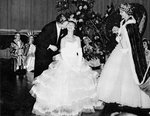


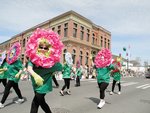
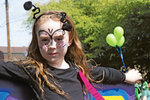
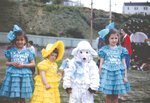
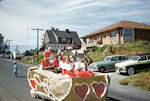
Tom Camfield remembers the first Rhododendron Festival from when he was about 6 years old—85 years ago.
For this Port Townsend resident, it was also the inaugural festival of what was to grow into a multi-event gala with parades, a court of princesses and a reigning queen, races of all sorts and a cake picnic to top it all off.
“Bed races, whisker-growing contests, demolition derbies—I just can’t remember what all events we had down through the years,” Camfield recalled.
“I do remember the festival’s Grand Parade coming north-south down Taylor Street when it ran that route one year in about 1941,” he said. “Mike Castellano was playing lead trumpet with the Coast Artillery band from Fort Worden and Bill Delaney was playing a flamboyant bass drum with some student-age music unit.”
This year, the beloved festival was canceled on April 4 as the coronavirus pandemic prompted city leaders and festival organizers to err on the side of caution in the face of the highly contagious and deadly disease. The only other time the event has been sidelined was during World War II.
Camfield remembers much of it as if it were just a few scant years ago. He dated—and later married—Jean Westall, who ran for Rhody queen and was one of two princesses in 1950.
After a stint in the Korean War, he returned to Port Townsend as a reporter and photographer for The Leader.
“In 1955, I was shooting the festival parade from the metal awning of Baker Drug,” he recalled. “Proprietor T. H. Baker and Leader publisher Dick McCurdy watched the parade with me from there. I used an old-style press camera that held two sheets of 4 x 5-inch film.”
Rhody history
According to Marge Samuelson, a longtime Port Townsend resident and Jefferson County Historical Society volunteer, a seed of an idea for some kind of civic event originated much earlier than most people believe.
In 1900, M.F. Saterlee, who was associated with a number of Port Townsend newspapers, declared that every city on the Pacific Coast should have a celebration of the things it has to offer.
“These annual gatherings bring closer in touch the residents of trading centers and tributary country and tend to a closer and more intimate acquaintance, at the same time affording a season of recreation,” he wrote in a letter to The Leader.
He proposed a Grand Rhododendron Street Carnival to attract thousands.
“The city contains thousands of acres of the most beautiful evergreen flowering trees … ideal for a grand display,” he wrote. “I would bring trainloads of the shrubs to the city, place them along the streets. I would make certain streets, the terrace and the hill a veritable forest and embankment of flowers, which could be seen by passengers on every daylight steamer coming into or passing the harbor.
“A rhododendron carnival would be unique and stand alone far and above all other flower exhibitions and would be remembered during life by those who were so fortunate as to witness it.”
Rhody aspirations
His dream wouldn’t come to fruition for another 35 years.
It was Clive Buttemere, a rapscallion of a fellow who haunted downtown always in search of a scheme to make a buck, who in 1935 pushed the idea of a local festival to feature the state flower — and give Port Townsend an event to rival Seattle’s Potlatch Parade.
He succeeded there. The Seattle event was celebrated for three years from 1911, but fizzled out when World War I started in 1914. Community activists tried to revitalize the event in 1934, but it, too, ended in 1941 with the beginning of WWII.
According to Camfield’s second book, “Port Townsend: The City that Whiskey Built,” Buttemere arranged for Hearst Metro-Tone to feature the blooming native flowers on their newsreels that were shown before movies.
“It is 1935. The worst of the Depression years are over,” a Leader article reads. “Three pounds of coffee sells for 75 cents and the nation’s spirit is as low as are the prices. Something has to be done to elevate the belief that once again America is the land of plenty.”
Enter Randolph Hearst, an eccentric newspaperman of the day, who selected Port Townsend as a venue to show the beauty still out there. He wanted four girls to accompany the flowers in the shorts he would show before movies in the theaters; plans were quickly underway for a Merchant’s Exposition and Rhododendron Day.
The queen in 1935 was Dorothy Woodbury who danced with the state governor, Clarence Martin, at the Odd Fellows Hall.
The following year, Buttemere approached the local American Legion post to ask if they’d be interested in promoting the festival and parade to honor the flower the following year. The first official Rhododendron Queen was Myrtle Olsen, who tallied almost a half-million votes.
It was unsure among the townsfolk how Buttemere made any money off the endeavor, but the die was cast.
The queen and her court — obviously a big deal if the number of front-page Leader articles about it are any indication — were selected by customers who cast ballots they earned by making purchases in local stores. Ten ballots were given for every dollar spent, or people could buy 10 for a 50-cent donation. Ironically, “buying votes” was strictly prohibited.
Later, pins were sold, and the princess who sold the most won the coveted regal crown. At one point, a $5 prize was offered as an incentive to whomever sold the most pins. The ultimate prize was a “fine gold watch” awarded to the queen and a gold ring with the setting of their choice for her two attendants.
The contest was open to all unmarried girls, aged 16 to 30. Employment was irrelevant, an article noted. They followed up with the Queen’s Ball and a parade, and then a trip via motorcar to Seattle, Tacoma — with a state patrol escort — and Olympia, where they were greeted by elected officials and motion-picture cameras and barraged with questions from numerous metro-area newspapermen about the festival.
Through the years
Each year the festival grew, and more people entered in costume contests, adult, kid, doll and pet parades. There were drawings for prizes, a Fort Worden drum and bugle corps presentation, foot races, a softball game, banquets, concerts, fat man’s and spoon-and-egg races, pajama dancing, talent shows and a Victorian home tour, among other events.
Floats, “modern-day” fire trucks and throngs of people came from all over to participate. The area’s beauty and the work put in to extol the virtues of Port Townsend were lauded numerous times over the years. In 1940, a soap box derby and fly-casting competitions were added.
By 1946, more than 10,000 people were believed to be in attendance; by the 1990s, that would triple.
The parades decades ago were lengthy, with marching bands, horsemen, military vehicles, drill teams and motorcycles complementing the floats.
One year, Walter Swanson, a world champion log-roller, came to town and with his team jumped rope, roller-skated and played leap-frog on the log and challenged townsfolk to stay on a log for five minutes as they jousted to toss the other in the Sound.
By the 1970s, boat and motorcycle races were incorporated, as well as arts and crafts shows, sky divers and boxing matches. Twenty years later, there was a golf tournament, window-display contests, a rhododendron show and helicopter rides.
Nowadays, the parade can last almost two hours — and locals know to get the best placement of their lawn chairs, sofas, bar stools and recliners along the parade route the night before.
It’s still a time when generations of families gather, friends meet up, old high school classmates relive festivals of days past and create new traditions for the future.
“It must have been 1936 down at what is now Jefferson County Memorial Field, and my parents talked me into competing in a footrace for little guys,” Camfield recalled. “I finished second to Billy Cooper. It’s my only recollection of that day, and it clings to my memory because it was smack in the middle of the Great Depression — and the 50-cent piece I won was more money than I’d ever had at one time. Billy won a silver dollar.”
He marched in the parade in eighth grade in 1943.
The war years, with gasoline and rubber rationing — and far fewer men in town — made for smaller parades; the event was put on hiatus in 1941 due to World War II.
“I marched in it in the early 1950s with my brother and two sisters,” Samuelson recalled. “My brother’s costume was made of crepe paper, and unfortunately he had to go to the bathroom ... but there was no way to get out of it. Well, you can imagine the rest.”
Her children and grandkids, too, participated in the Kiddies’ parade over the years, winning ribbons and the coveted carnival tickets. She attended all the parades for another 25 years.
Today’s festivities
Today, the festival features many of the same elements, with the Grand Parade the most popular event, with outrageous floats and costumed people riding dubious methods of transportation, classic and antique automobiles, clowns, musicians — and the ubiquitous Unexpected Brass Band — and costumed kids and dogs. There’s the Running of the Balls, the Funtastic Carnival, the Rhody Run foot races, a hair and beard contest, the crowning of the Queen and her princesses and the bed and trike races.
The Pet Parade, too, has lured not just dogs and horses, but pigs, goats, chickens and the occasional cat or goldfish.
The Grand Parade is followed by a cake picnic, where thousands are served a slab of cake and listen to music at Pope Marine Park.
“It’s almost like alumni weekend,” Jeinell Harper was quoted as saying when she and her husband were co-chairs of the 1982 festival. “A lot of kids both Keith and I went to high school with will come home. You can walk up and down Lawrence Street and you know where different families have their spots. You get to see a lot of people.”
“It’s the enjoyment of the whole community getting together for the same purpose on the same day,” said Brent Shirley, who chaired the event in 1978. “I still love the parade and the carnival.”
“Sure, a lot of things have changed,” said Ken Carter, who had been in town two months before he ended up being the chairman in 1954. “But it’s still something wonderful. It’s a chance for people to get together and celebrate being in Port Townsend, in Jefferson County, and to have fun. I hope it’s always with us.”
“Why the festival is so important to the community?” Samuelson said. “It’s family, pure and simple. Everyone has a Rhody story to tell.”